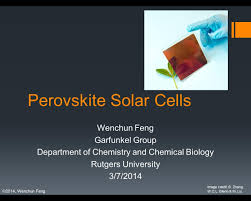
Breaking News
 Wash Post Editorial Board Turns Against Climate Agenda?!
Wash Post Editorial Board Turns Against Climate Agenda?!
 One Year Ago I Predicted and Described in Detail Huge Mars AI Plans that Elon Musk Confirmed...
One Year Ago I Predicted and Described in Detail Huge Mars AI Plans that Elon Musk Confirmed...
 British Teachers To "Spot Misogyny" In Boys And Target Them For Reeducation
British Teachers To "Spot Misogyny" In Boys And Target Them For Reeducation
 Democrats Refuse To Release Post-Mortem Of 2024 Election Loss, DNC Chair Says
Democrats Refuse To Release Post-Mortem Of 2024 Election Loss, DNC Chair Says
Top Tech News
 This tiny dev board is packed with features for ambitious makers
This tiny dev board is packed with features for ambitious makers
 Scientists Discover Gel to Regrow Tooth Enamel
Scientists Discover Gel to Regrow Tooth Enamel
 Vitamin C and Dandelion Root Killing Cancer Cells -- as Former CDC Director Calls for COVID-19...
Vitamin C and Dandelion Root Killing Cancer Cells -- as Former CDC Director Calls for COVID-19...
 Galactic Brain: US firm plans space-based data centers, power grid to challenge China
Galactic Brain: US firm plans space-based data centers, power grid to challenge China
 A microbial cleanup for glyphosate just earned a patent. Here's why that matters
A microbial cleanup for glyphosate just earned a patent. Here's why that matters
 Japan Breaks Internet Speed Record with 5 Million Times Faster Data Transfer
Japan Breaks Internet Speed Record with 5 Million Times Faster Data Transfer
 Advanced Propulsion Resources Part 1 of 2
Advanced Propulsion Resources Part 1 of 2
 PulsarFusion a forward-thinking UK aerospace company, is pushing the boundaries of space travel...
PulsarFusion a forward-thinking UK aerospace company, is pushing the boundaries of space travel...
 Dinky little laser box throws big-screen entertainment from inches away
Dinky little laser box throws big-screen entertainment from inches away
 'World's first' sodium-ion flashlight shines bright even at -40 ºF
'World's first' sodium-ion flashlight shines bright even at -40 ºF
Progress to scalable roll-to-roll manufacturing of Perovskite Solar Cells

Most solar panels on the market today are made of silicon, but perovskite solar cells have the potential to accelerate the growth of photovoltaic (PV) manufacturing in the United States because they're much cheaper to make and have shown performance potential in the lab.
The most commonly used deposition method in the laboratory, called spin coating, produces devices with the highest efficiency, but the process wastes more than 90 percent of the chemicals used, the so-called perovskite ink. Spin coating also works best on cells smaller than four square inches, but there isn't an easy way to enable this technology to be used on a larger surface.
The NREL researchers examined potential scalable deposition methods, including:
* Blade coating, which uses a blade to spread the chemical solution on substrates to form wet thin films. The process can be adapted for roll-to-roll manufacturing, with flexible substrates moving on a roller beneath a stationary blade similar to how newspapers are printed. Blade coating wastes less of the ink than spin coating.
* Slot-die coating, which relies on a reservoir to supply the precursor ink in order to apply ink over the substrate. The process hasn't been as well explored as other methods and so far has demonstrated lower efficiency than blade coating. But the reproducibility of slot-die coating is better than blade coating when the ink is well-developed, so this is more applicable for roll-to-roll manufacturing.
* Ink-jet printing, which uses a small nozzle to disperse the precursor ink. The process has been used to make small-scale solar cells, but whether it is suitable for the high-volume, large-area production will depend on the printing speed and device structure.



